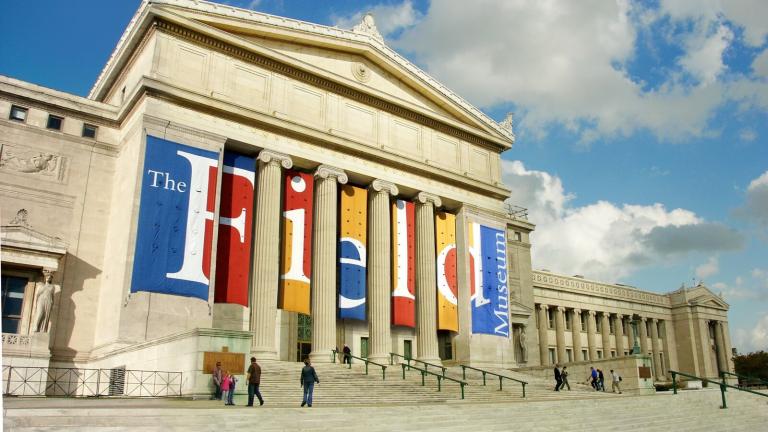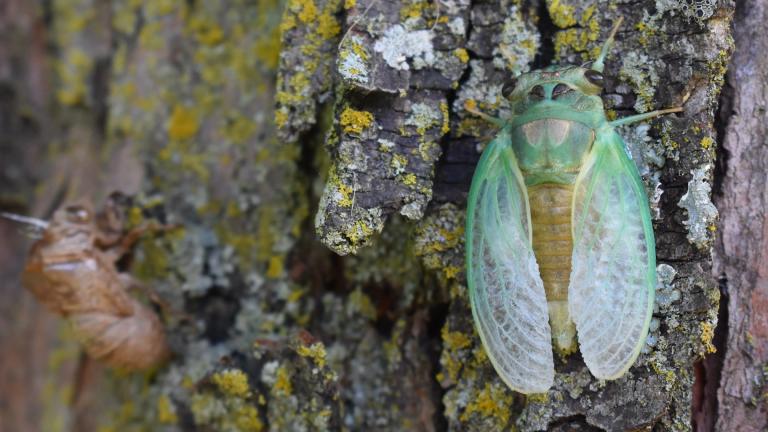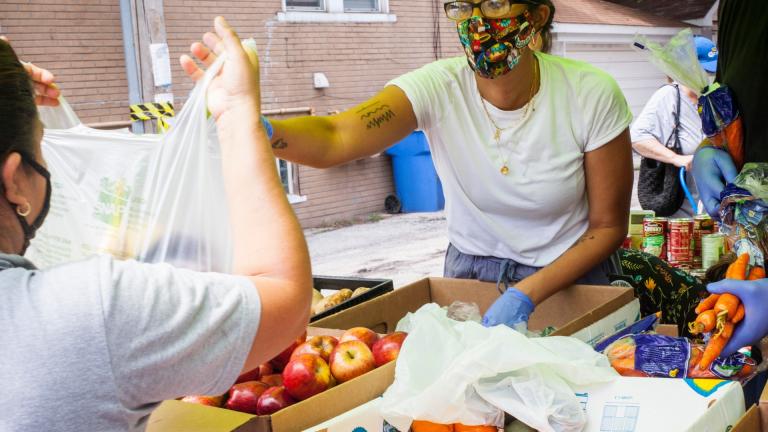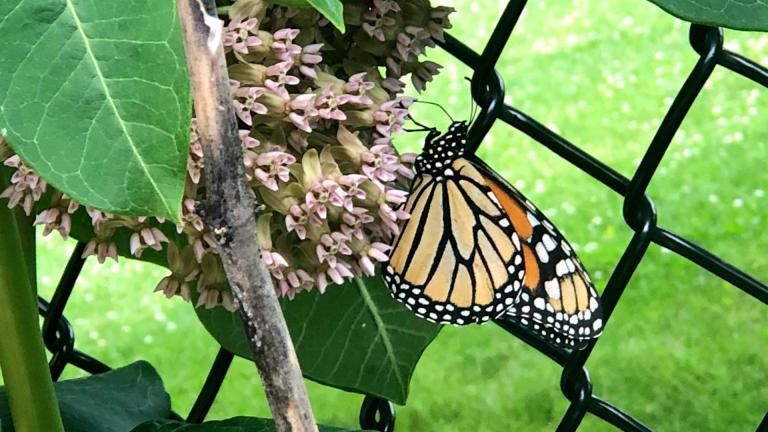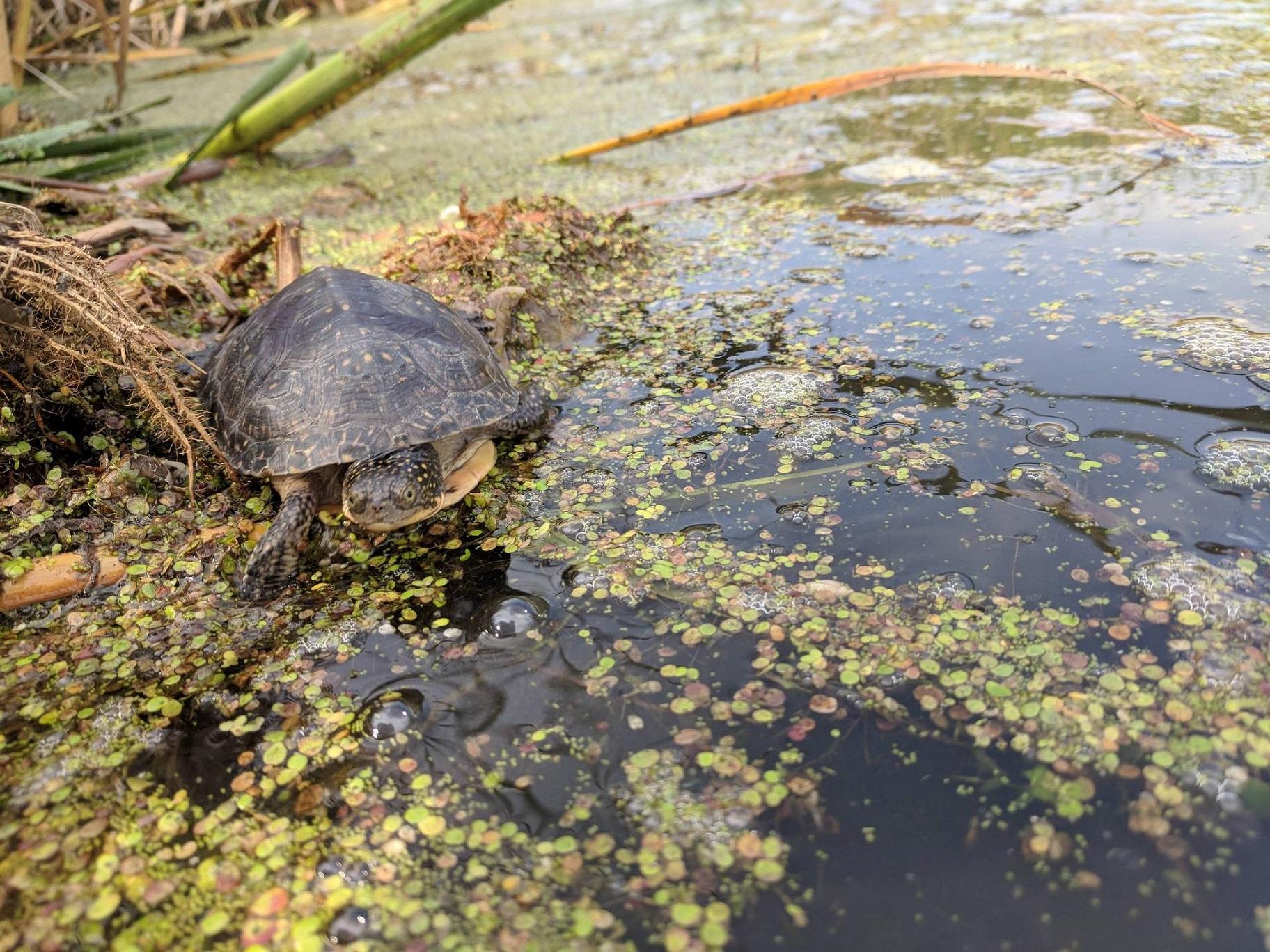 One of 52 Blanding’s turtles released Wednesday at a DuPage County Forest Preserve site. (Ashley Hosmer / Peggy Notebaert Nature Museum)
One of 52 Blanding’s turtles released Wednesday at a DuPage County Forest Preserve site. (Ashley Hosmer / Peggy Notebaert Nature Museum)
After spending their first year at Chicago’s Peggy Notebaert Nature Museum, 52 endangered Blanding’s turtles were released into the wild Wednesday morning in DuPage County.
The event was part of a decadelong partnership between the Nature Museum and the Forest Preserve District of DuPage County, where groups of turtles are released each spring and fall after being raised at the Nature Museum.
The Forest Preserve launched a Blanding’s turtle “head-start” program in 1996 to help preserve the species, which is classified as endangered in Illinois. Although the turtles are native to the northern half of the state, the species has experienced a sharp decline in population, caused by habitat destruction, predation and harvesting for the pet trade, making it increasingly likely that the turtles would go extinct without assistance from conservationists.
As the 1-year-old turtles were being released Wednesday, Lalainya Goldsberry, manager of living collections at the Nature Museum, was busy preparing tubs for a new group of 120-130 hatchling turtles that will arrive Thursday at the museum.
 A Blanding’s turtle pokes its head above the water after being released Wednesday at a DuPage County Forest Preserve site. (Ashley Hosmer / Peggy Notebaert Nature Museum)
A Blanding’s turtle pokes its head above the water after being released Wednesday at a DuPage County Forest Preserve site. (Ashley Hosmer / Peggy Notebaert Nature Museum)
Raising the hatchlings in a controlled environment ensures that more of the turtles will be healthy, increasing the chance that they can breed once returned to the wild, Goldsberry said.
“There are a lot of predators that like to eat up the eggs – and the hatchlings,” Goldsberry said, adding that the turtles are targets for racoons, skunks and opossums.
About 15 turtles are kept at the Nature Museum for a second year in order to continue growing, Goldsberry said.
Once the turtles are released, ecologists from the forest preserve temporarily trap the animals to collect information about their size, weight and health. The turtles are equipped with a microchip and also have markings on the top part of the outside of their shell.
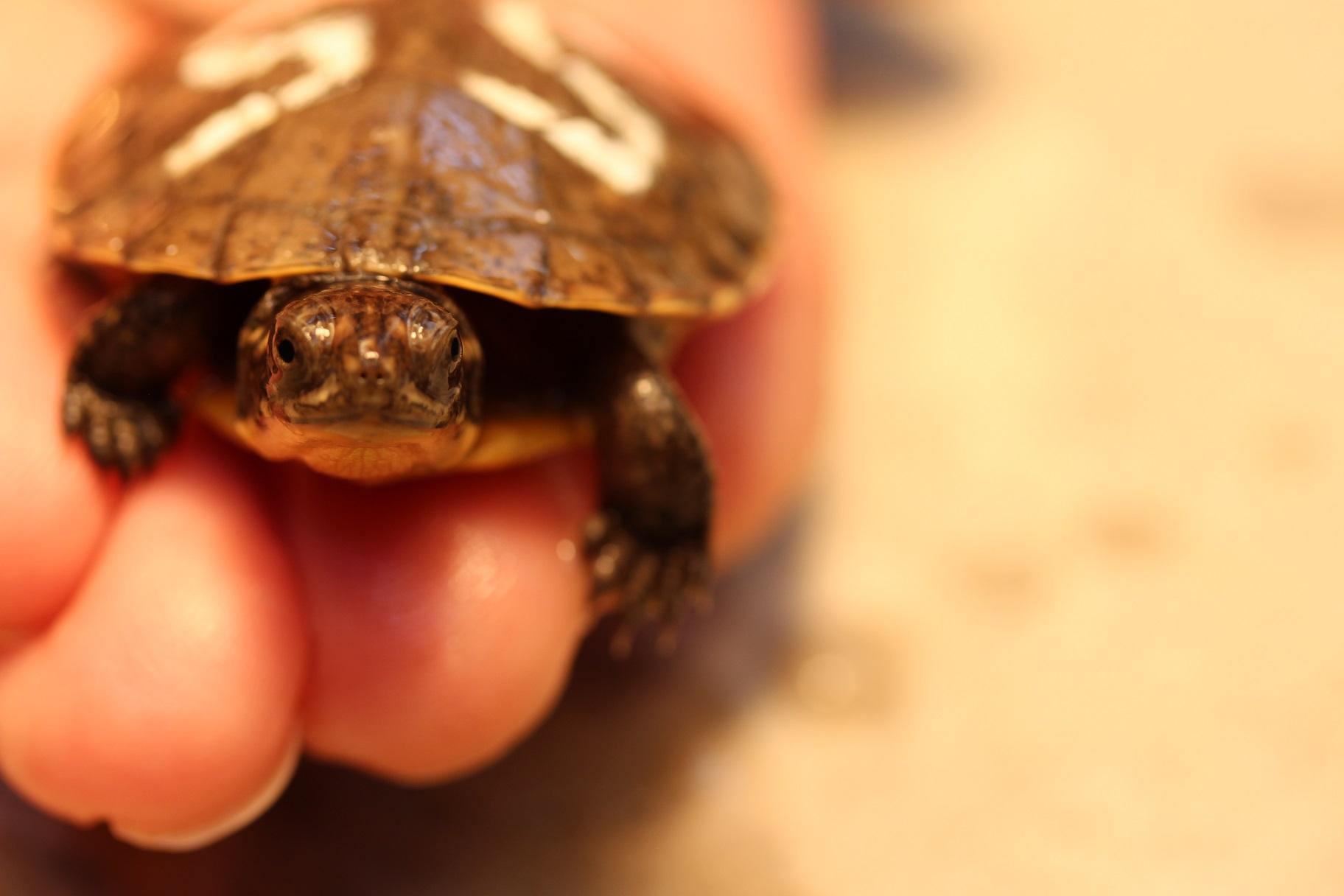 While at the Nature Museum, turtle hatchlings are marked with numbers so that staff can track their growth and development. (Courtesy Peggy Notebaert Nature Museum)
While at the Nature Museum, turtle hatchlings are marked with numbers so that staff can track their growth and development. (Courtesy Peggy Notebaert Nature Museum)
The organizations do not disclose the exact location in which the turtles are released to protect them from potential poachers, Goldsberry said.
The forest preserve has hatched about 3,300 turtles since the start of its “head-start” program more than 20 years ago. The organization works with a handful of Chicago-area institutions that temporarily host turtle hatchlings, including the Nature Museum and Shedd Aquarium.
Visitors to the Nature Museum can see the newly arrived turtle hatchlings starting Thursday in the “Mysteries of the Marsh” exhibit.
“They’re adorable,” Goldsberry said.
Contact Alex Ruppenthal: @arupp | (773) 509-5623 | [email protected]
Related stories:
Turtle With Rare Genetic Condition Adopted by Suburban Ecologist
Shedd Aquarium Welcomes 24 Endangered Blanding’s Turtle Hatchlings
Notebaert Nature Museum Raises 131 Endangered Baby Turtles


